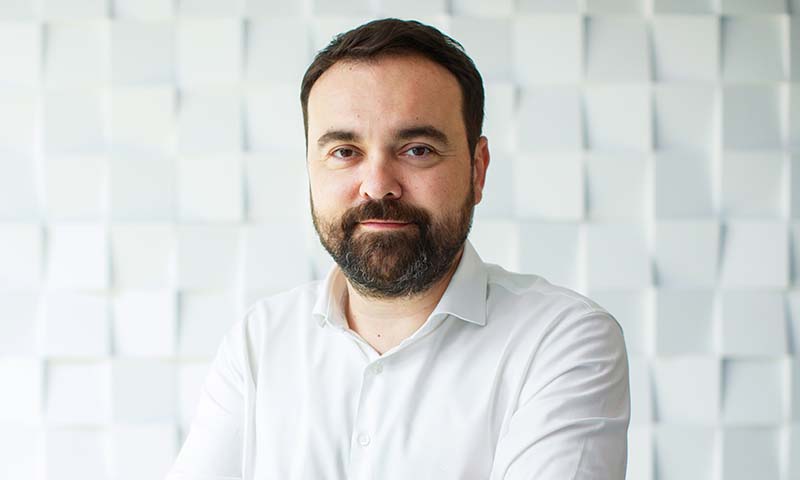In today’s post, Liviu Chelaru, Business Line Manager - Compressor Technique Service at Atlas Copco Romania, talks about what actions the company has been taking in diversity management.
Could you share with us some key milestones in the D&I journey of Atlas Copco?
At Atlas Copco we believe that diversity and inclusion are business-critical drivers for our long-term success.
This belief has been always part of our DNA and the way we do business.
In my view, one of the most important milestones in the D&I journey was the formulation and launch of D&I strategy. The decision to have clear focus and priorities safeguarded by the D&I council, showcasing our focus and dedication behind this cause in action. A proof that our strategy is effective, was the increased number of applications by female talents for roles that “typically” are occupied by male professionals.
Additionally, the nomination of local ambassadors who are leading by example and owning the D&I agenda is a key milestone on embracing in action a culture where difference is valued.
Last but not least, the signature of the Romanian Diversity Charter is an action close to our hearts for a better world tomorrow.
What aspects of diversity management have the highest priority in your company?
Diversity & Inclusion strategy in Atlas Copco has been structured taking into consideration the full life-circle of people management: Attraction-Recruitment-Development & Retention.
Key priorities for the management and implementation of these initiatives in our region are:
- The commitment from top management who are leading by example
- The identification of new talent pools that will attract new professionals in our team with the support of advanced recruiting tools
- The opportunity to openly discuss at all levels D&I concerns/ ideas/ proposals
- The opportunities guided by D&I strategy for all, to learn and grow in our organization
- Improve gender balance by reaching 30% females by 2030
In your opinion, what are the biggest challenges faced by your sector in creating a diverse and inclusive workforce?
The opportunities and challenges in working landscape environment has changed over the years and it is our responsibility not to follow but to lead some of the positive trends in the market.
One of the biggest challenges in our sector is the perception of the roles and responsibilities. Many times, female talents are reluctant to apply for roles that in the past were occupied mainly by male professionals and vice versa.
Atlas Copco wants to challenge this perception and has nurture a culture embracing the belief: “diverse by nature and inclusive by choice”.
Combined with perception, another big challenge in our sector is related to the preferred skillset. It might look convenient occupying “experienced” talents, but this should not be the only option. Mindset, learning agility, passion for learning and “hire character-train skill” attitude should start applying in our sector to ensure that we are welcoming all profiles and giving equal opportunities for development.
What business benefits do you see as a result of increasing D&I?
Research has shown that there are clear correlations between diversity and inclusion and:
- creativity and sustainability
- innovation and profitability
- attracting, recruiting, and retaining the best talent
- better decision making
But when it comes in day-to-day operations and during working hours, the benefit is the feeling of engagement. It is crucial to be yourself, to feel motivated, to feel secure to make mistakes and try new things again and again; this feeling is the priceless benefit of Diversity & Inclusion.
Can you name three diversity challenges that companies have to pay attention to?
Many times, companies are taking decisions and creating strategies without evaluating where they are today but focusing more on where they want to go. This can be a risk as the outcome of the strategy will not be relevant to everyone so in my view, it would be great to approach the D&I priorities by applying a bottom-up thinking instead of a top-down approach.
Additionally, it is important to keep it relevant and simple. This strategy should be close to the heart of the people in order to be successful.
Last but not least clarity is the key; it is crucial to communicate what diversity means and avoid ending up counting gender % instead of making people count.
At Atlas Copco we are considering ourselves: Diverse by nature and inclusive by choice.
Bright ideas come from all of us. The more unique perspectives we embrace, the more innovative we are. Together we build a culture where difference is valued, and we share a deep sense of purpose and belonging.
What do you do to convince your colleagues to see the value in diversity management, or even more to truly get them on board?
How we safeguard that we have a truly diverse culture and mindset?
At Atlas Copco, we strive for diversity and inclusion in all aspects of our operations.
Diversity and inclusion are embedded in our values; how we work together, how we innovate and how we create value for our customers and societies.
Starting from recruiting and onboarding every new employee is treated fairly and with respect, is seen and heard and has equal opportunity to grow and thrive; this gets perpetuated in the organization, and we are proud of nurturing this mindset.
We employ the best talent by exploring the entire talent pool and by minimizing bias in our policies, processes, decision making and behaviors.
We provide equal opportunities - regardless of age, disability, ethnicity, gender, gender identity, nationality, political opinion, religion, and sexual orientation.
At the end of the day, working in an environment that promotes D&I makes the employees feel more engaged and motivated and this is reflected on productivity since makes them thrive in their job objectives.
Interview by Dana Oancea. Copyright Carta Diversitatii din Romania.
